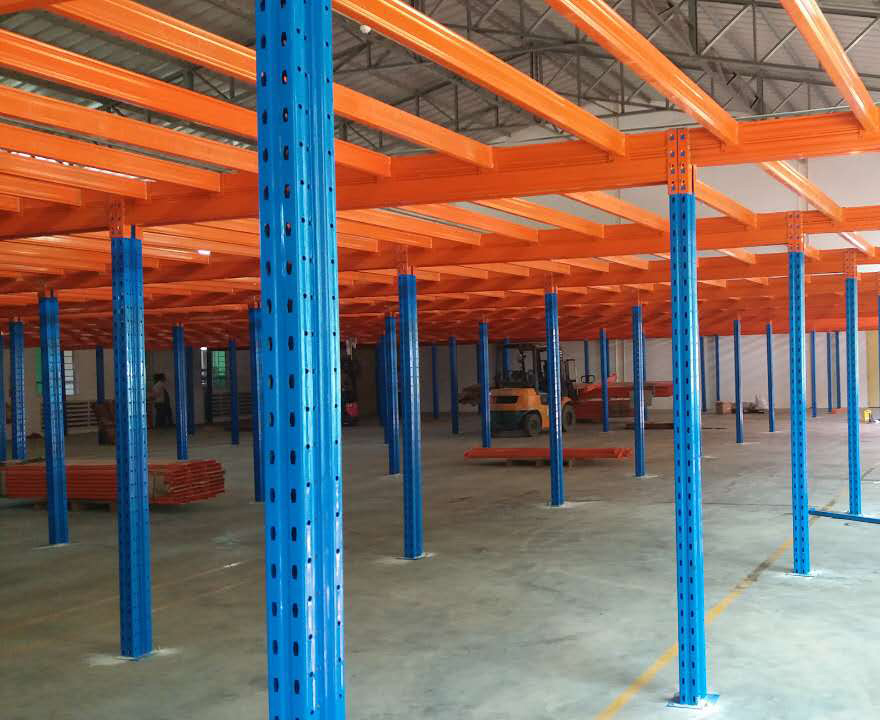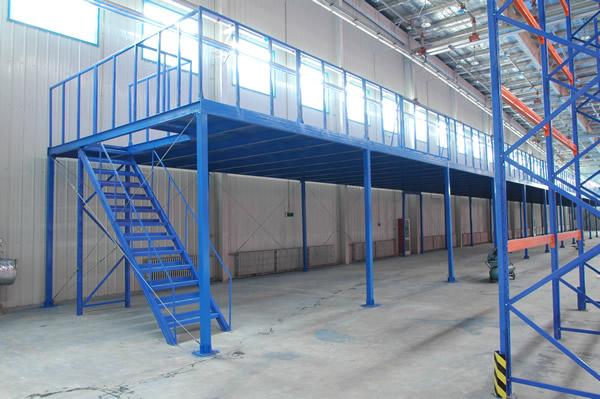In the world of logistics, manufacturing, and retail, space is a premium commodity. Efficiently storing goods is not just about stacking boxes; it's about creating a structured, safe, and accessible environment that fuels productivity. At the heart of any organized warehouse or storage facility lies a critical component: the inventory rack system. This foundational structure is far more than simple steel beams; it's the backbone of modern inventory management. This article delves deep into what an inventory rack system is, explores its various forms, and highlights the common challenges businesses face with them.

An inventory rack system is a structured storage solution designed to store materials or goods in an organized, high-density manner. Unlike simple shelving, these systems are engineered to handle significant weight and are designed for use with material handling equipment like forklifts and order pickers. The primary purpose of a racking system is to maximize vertical and horizontal space, improve inventory accessibility, and enhance the overall efficiency of storage and retrieval operations. A well-chosen inventory rack system transforms chaotic floor stacking into a streamlined, safe, and highly functional storage operation.
Why is investing in a proper racking system non-negotiable for most businesses? The benefits are multifaceted and directly impact the bottom line.
Maximized Storage Density and Space Utilization: By leveraging the cubic airspace of a facility, racking allows businesses to store significantly more inventory in the same footprint. This is crucial in urban areas where real estate costs are high.
Improved Inventory Accessibility and Organization: A well-designed system allows for direct access to every pallet or bin. This facilitates better inventory control, reduces the time needed to locate items, and supports inventory management methods like FIFO (First-In, First-Out) or LIFO (Last-In, First-Out).
Enhanced Safety for Personnel and Inventory: Proper racking reduces the risk of accidents caused by unstable stacks of goods falling. It creates clear aisles and organizes weight properly, protecting employees and the inventory itself from damage.
Increased Operational Efficiency and Productivity: When workers can quickly and safely access products, the speed of order picking, stocking, and cycle counting increases dramatically. This leads to faster order fulfillment and lower labor costs.
Scalability and Flexibility: Most modern inventory rack system designs are modular and can be reconfigured, expanded, or relocated as storage needs evolve, protecting your long-term investment.
Not all storage needs are the same, and consequently, there are several types of racking systems designed for specific applications. Choosing the right one is critical.
Selective Pallet Racking
This is the most common and versatile type of inventory rack system. It allows direct access to every pallet, making it ideal for warehouses with a high variety of SKUs. It consists of upright frames and horizontal load beams, creating individual bays for each pallet.
Drive-In/Drive-Through Racking
Designed for high-density storage of homogeneous products, this system eliminates access aisles. Forklifts drive directly into the rack structure to place or retrieve pallets. Drive-in racks have an entrance on one side, while drive-through racks have entrances on both ends, better supporting FIFO inventory.
Push Back Racking
This is a high-density system that uses carts on inclined rails nested within the rack structure. Pallets are loaded from the front, pushing the previous load back. When retrieving a load, the next pallet moves forward by gravity. It offers good density while still allowing for multiple SKUs per aisle.
Pallet Flow Racking
A dynamic system that uses gravity rollers and a slight decline. Pallets are loaded from the high end and flow to the low end for picking. This is an excellent solution for strict FIFO inventory, perfect for perishable goods or items with expiration dates.
Cantilever Racking
This system features long arms that extend from a central column, ideal for storing long, bulky, or irregularly shaped items like lumber, pipes, furniture, or carpets that are not suited for standard pallet racking.
Selecting the right system requires a careful analysis of your specific needs. Key factors to consider include:
Inventory Characteristics: The weight, size, shape, and type of products you store (e.g., palletized, cartons, long items).
Inventory Turnover and Methodology: Whether you use FIFO, LIFO, or another method will dictate which system (e.g., flow vs. selective) is most appropriate.
Available Space and Ceiling Height: The physical dimensions of your facility will determine how high you can go and which high-density solutions are feasible.
Equipment Compatibility: Your inventory rack system must be compatible with the forklifts, order pickers, and other equipment you use.
Budget and ROI: Consider both the initial investment and the long-term return through improved efficiency, safety, and space savings.

Even the best systems can encounter problems. Being aware of these common issues is the first step toward preventing them.
1. Improper Installation and Poor Maintenance
A poorly installed inventory rack system is a significant safety hazard. Issues like unlevel frames, improperly seated beams, or missing safety locks can lead to catastrophic collapse. Furthermore, a lack of regular inspection and maintenance allows minor issues, like small dents or loosened components, to develop into major failures.
2. Overloading and Incorrect Loading
Every rack system and its components have specific weight capacities. Exceeding these limits is extremely dangerous. Similarly, incorrectly loading pallets—such as placing a heavy load on damaged pallets or unevenly distributing weight—can cause the load to shift or fall, damaging the rack and creating a safety risk.
3. Damage from Forklifts and Equipment
This is perhaps the most frequent cause of rack damage. Even minor impacts from forklifts can bend upright frames, dislodge beams, or compromise the structural integrity of the system. A single damaged component can weaken the entire structure.
4. Inadequate Safety Protocols and Training
Without clear safety procedures and thorough training for all personnel who work around or operate equipment near the racks, the risk of accidents skyrockets. This includes training on load limits, proper inspection techniques, and safe maneuvering in aisles.
5. Poor Planning and Lack of System Optimization
An inventory rack system that is not optimally designed for the inventory it holds can create ongoing inefficiencies. This includes aisles that are too narrow for equipment, wasted vertical space, or a layout that causes excessive travel time for pickers, hindering productivity.
An inventory rack system is a strategic investment that goes beyond simple storage. It is a critical tool for optimizing space, enhancing safety, and driving operational efficiency. By understanding the different types of systems available, carefully considering your specific needs, and being vigilant about common issues like damage and overloading, businesses can select, implement, and maintain a racking solution that will serve as a reliable and productive backbone for their operations for years to come. A proactive approach to your racking system is an investment in the smooth and profitable functioning of your entire supply chain.
 Wechat
Wechat
 Whatsapp
Whatsapp